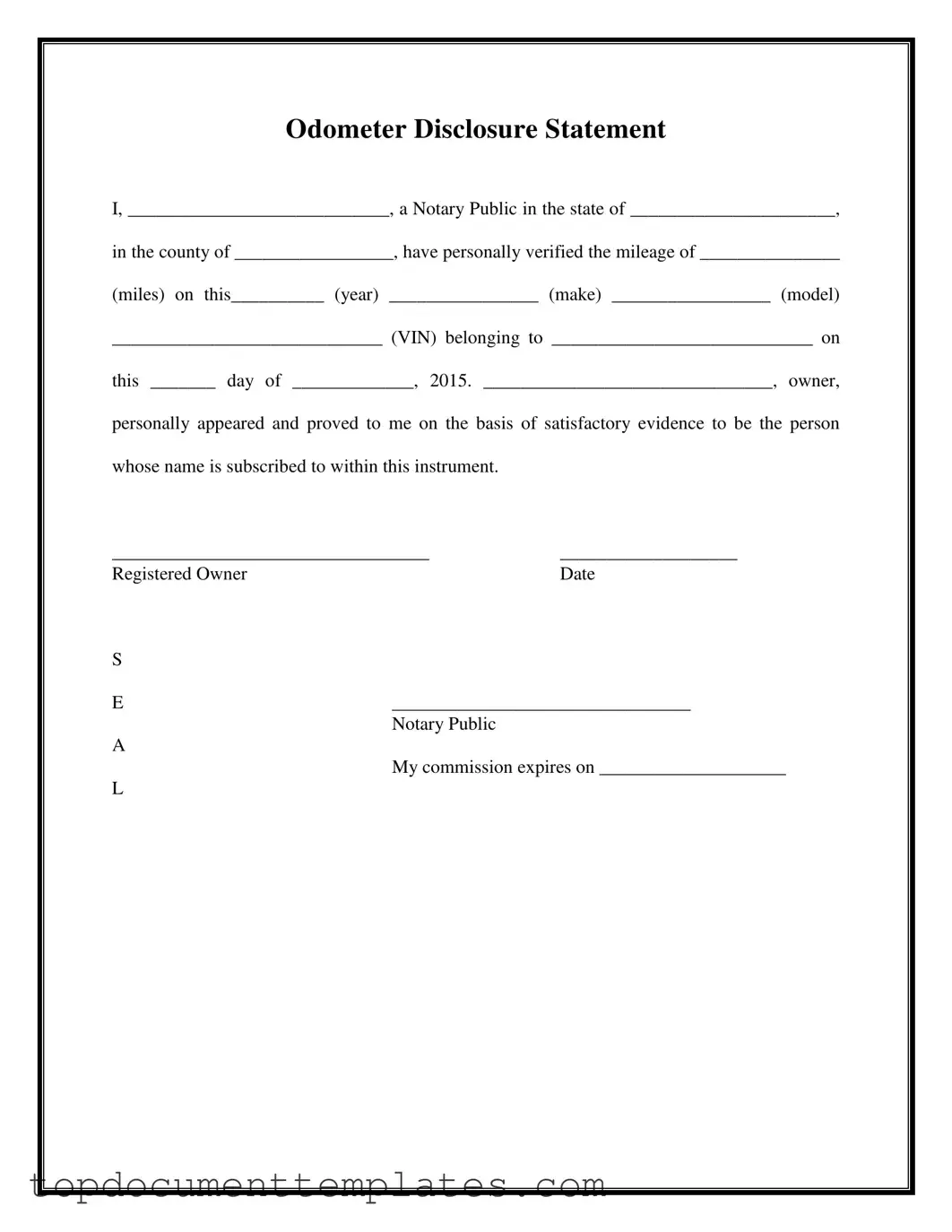The Notarized Odometer Statement form plays a crucial role in the process of buying and selling vehicles, ensuring transparency and accuracy regarding a vehicle's mileage. This document is particularly important in preventing fraud, as it provides a legal affirmation of the odometer reading at the time of the transaction. The form requires the signature of a notary public, who verifies the identity of the vehicle owner and attests to the accuracy of the mileage recorded. It includes essential details such as the vehicle's make, model, and Vehicle Identification Number (VIN), alongside the name of the owner and the date of the statement. By requiring notarization, this form adds a layer of credibility, making it more difficult for individuals to misrepresent the odometer reading. Furthermore, the information contained within the form serves as a safeguard for both buyers and sellers, offering protection against potential disputes that could arise after the sale. In essence, the Notarized Odometer Statement is not merely a bureaucratic requirement; it is a vital tool that fosters trust in the vehicle transaction process.
